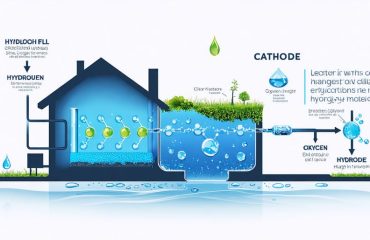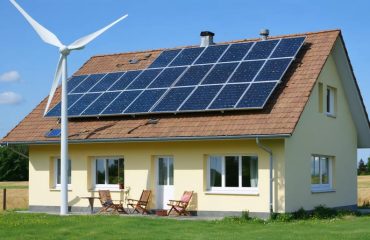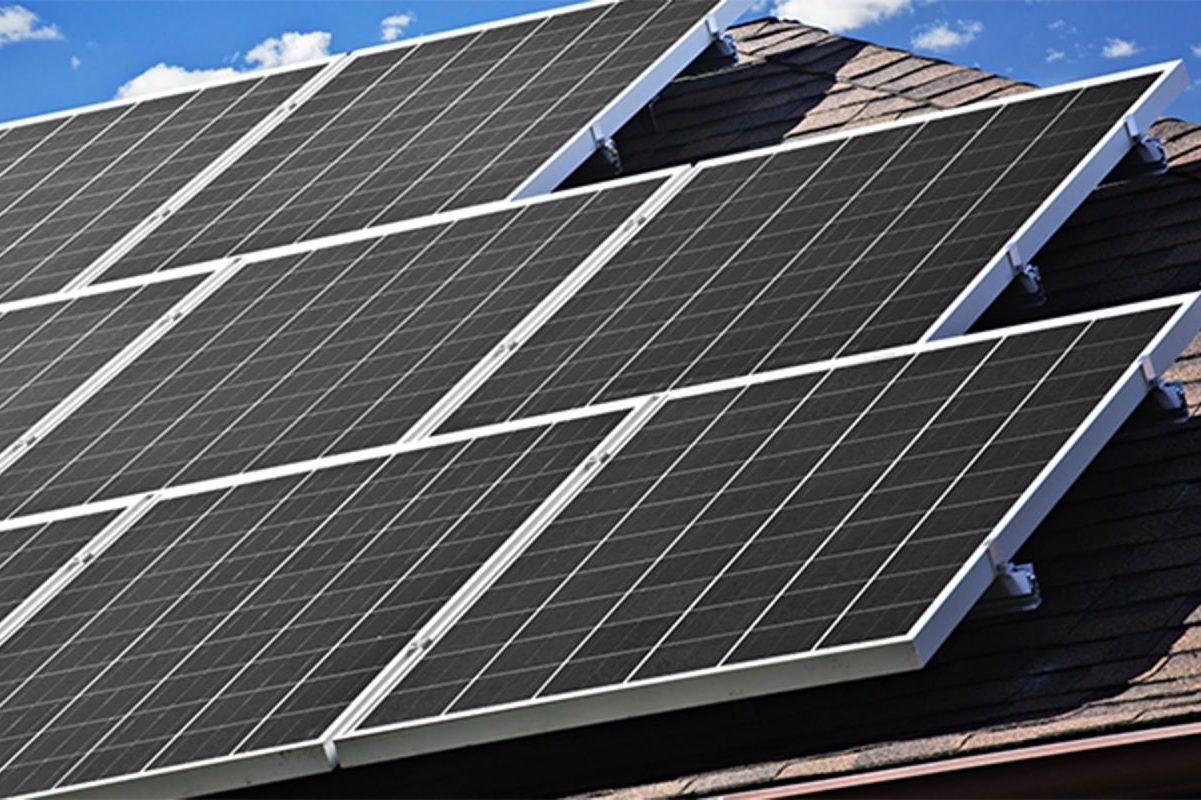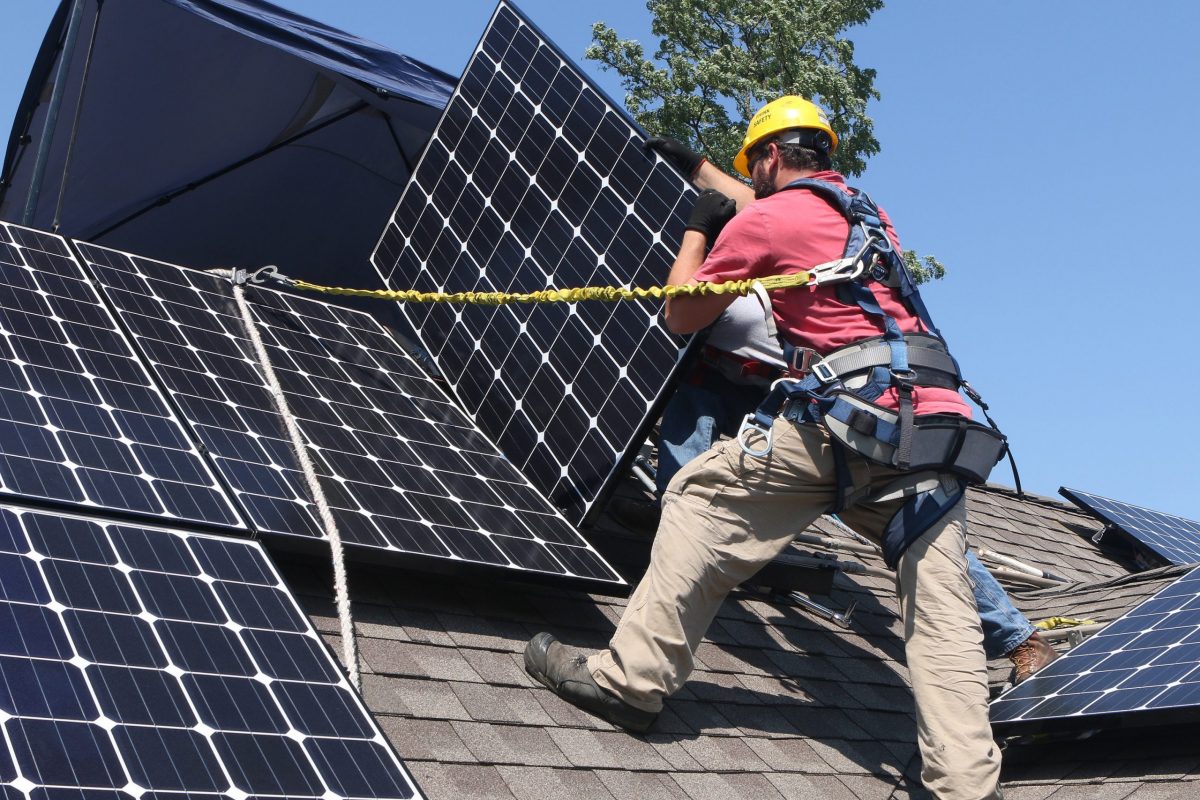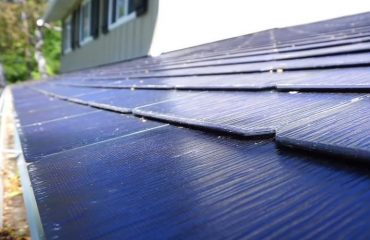Geothermal energy stands as America’s untapped clean energy giant, quietly powering over 3.7 million homes across the United States with Earth’s natural heat. As fossil fuel costs continue to rise and climate concerns intensify, this renewable powerhouse offers homeowners a reliable path to energy independence while slashing utility bills by up to 65%. The United States, blessed with the world’s largest geothermal resources, currently leads global geothermal electricity production with over 3,700 megawatts of installed capacity – enough to power several major cities.
From the bubbling geysers of Yellowstone to the vast thermal reservoirs beneath California’s Imperial Valley, American geothermal potential extends far beyond the traditional “hot spots.” Modern technologies now make it possible for homes across all 50 states to harness underground thermal energy for heating, cooling, and electricity generation. With federal tax incentives covering up to 30% of installation costs and state-level rebates making systems more affordable than ever, geothermal energy represents both an environmental win and a smart financial investment for American homeowners seeking sustainable, cost-effective energy solutions.
This dynamic shift toward geothermal adoption marks a crucial step in America’s journey toward energy independence and a cleaner, more sustainable future.
America’s Untapped Geothermal Potential
Where Geothermal Power Thrives in the U.S.
The western United States, particularly California, Nevada, and Oregon, leads the nation in geothermal power production, thanks to their unique geological features. California’s Geysers Geothermal Complex, located north of San Francisco, stands as the world’s largest geothermal field, generating enough electricity to power 900,000 homes. The complex harnesses natural steam from underground reservoirs, making it a model of sustainable energy production.
Nevada, nicknamed the “Saudi Arabia of Geothermal Energy,” hosts numerous facilities in its northern region, including the Steamboat Complex near Reno and the Stillwater Power Plant. These installations tap into the state’s abundant underground heat resources, providing reliable baseload power to thousands of homes and businesses.
Utah’s Roosevelt Hot Springs facility and Oregon’s Neal Hot Springs plant demonstrate how geothermal energy extends beyond California and Nevada. In Hawaii, the Puna Geothermal Venture takes advantage of volcanic activity to generate clean electricity for the Big Island’s residents.
These successful installations prove that geothermal power thrives where geological conditions align with technological capabilities, offering communities a steady, renewable energy source that operates 24/7, regardless of weather conditions or time of day.
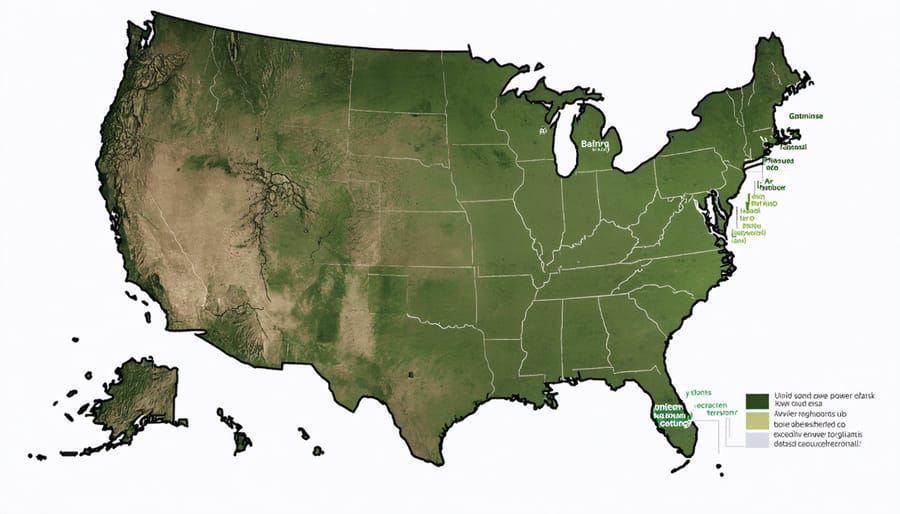
Your Home’s Geothermal Potential
Your home’s geothermal potential largely depends on your location and property characteristics, but most U.S. homeowners can benefit from this sustainable energy source. While creating an energy-independent home, understanding your regional advantages is crucial.
The Northeast and Midwest regions offer excellent conditions for geothermal heating due to their substantial temperature differences between seasons. Southern states can maximize geothermal cooling efficiency, particularly during hot summers. Western states benefit from diverse geological formations that support various geothermal applications.
Your property’s suitability depends on several factors:
– Available land for ground loops
– Soil composition and moisture content
– Local groundwater conditions
– Existing HVAC system configuration
– Climate zone requirements
Most residential properties can accommodate either horizontal or vertical ground loops. Horizontal systems require more land but are typically less expensive to install. Vertical systems need less space but involve deeper drilling, making them ideal for smaller lots or areas with rocky terrain.
Before installation, have a qualified contractor conduct a site assessment to determine the most effective system for your home. They’ll evaluate your property’s specific characteristics and recommend the best configuration for optimal performance.
How Geothermal Systems Power American Homes
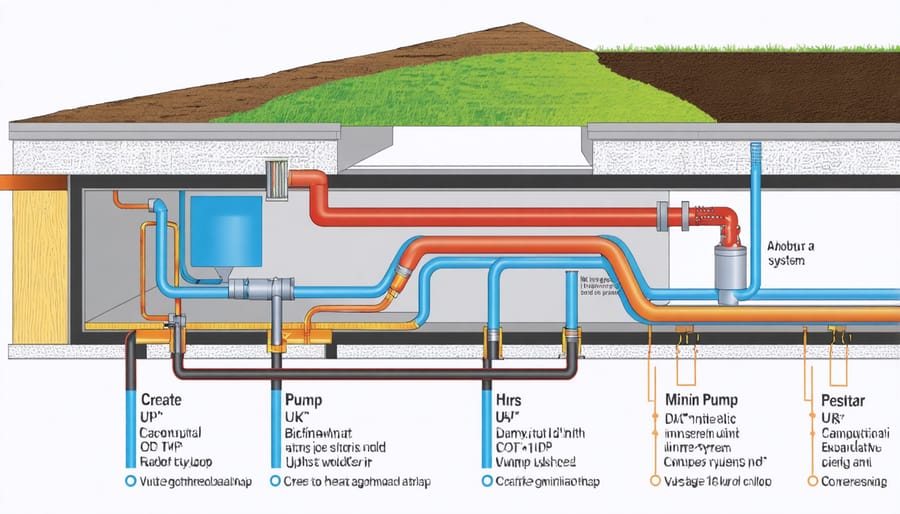
Ground-Source Heat Pump Basics
Ground-source heat pumps work by harnessing the Earth’s constant underground temperature to heat and cool your home. Unlike air temperatures that fluctuate dramatically throughout the year, the ground about 10 feet below the surface maintains a steady temperature between 50-60°F year-round.
The system consists of three main components: underground pipes (called a ground loop), a heat pump unit, and a distribution system inside your home. The ground loop contains a water-based solution that circulates through the pipes, absorbing heat from the ground in winter and transferring excess heat back to the ground in summer.
During cold months, the liquid absorbs heat from the earth and carries it to the heat pump, which concentrates and transfers it to your home’s air or water heating system. In summer, the process reverses – the heat pump extracts warmth from your home and deposits it underground through the same loop system.
Think of it like a refrigerator working in reverse. Just as your refrigerator removes heat from inside and releases it into your kitchen, a ground-source heat pump moves heat between your home and the earth. This process is highly efficient because it transfers heat rather than generating it, using only a small amount of electricity to operate the pump and compressor.
This simple yet effective technology can reduce your heating and cooling costs by up to 70% while providing consistent, comfortable temperatures throughout your home.
Year-Round Benefits for Your Home
Geothermal heating and cooling systems offer unmatched comfort and efficiency throughout the year, making them an invaluable addition to any home. During winter months, these systems extract natural heat from the earth to warm your living spaces efficiently, maintaining consistent temperatures without the typical cold spots associated with traditional heating methods.
In summer, the process reverses, pulling heat from your home and transferring it underground, providing reliable cooling that’s more efficient than conventional air conditioning. This versatility makes geothermal systems particularly attractive when combined with thermal energy storage solutions, enhancing your home’s energy independence.
One of the most overlooked benefits is the system’s ability to provide hot water. By capturing excess heat during the cooling process, geothermal systems can heat your water supply at a fraction of the cost of traditional water heaters. This feature alone can reduce your water heating expenses by up to 50%.
The consistency of ground temperatures means your geothermal system operates at peak efficiency regardless of outdoor weather conditions. Unlike air-source heat pumps that struggle in extreme temperatures, geothermal systems maintain their effectiveness year-round, providing reliable comfort while significantly reducing your carbon footprint and monthly energy bills.
The Financial Freedom of Geothermal Energy
Initial Investment vs Long-Term Savings
While the initial cost of installing a geothermal system might seem steep – typically ranging from $15,000 to $25,000 for an average home – the long-term savings make it a smart investment. Homeowners can expect to recoup their investment through energy savings within 5-10 years, depending on local energy costs and system efficiency.
The average American household saves 30-60% on heating costs and 20-50% on cooling costs after switching to geothermal energy. For a home previously spending $2,400 annually on heating and cooling, this could translate to savings of $1,200-$1,800 per year. Over a 20-year period, total savings can exceed $30,000.
Federal tax incentives currently offer a 30% tax credit for geothermal heat pump installations, significantly reducing the initial investment. Many states and utilities provide additional rebates and incentives, potentially lowering costs by several thousand dollars more.
Maintenance costs are remarkably low, as geothermal systems have fewer moving parts than traditional HVAC systems. The underground loops typically last 50+ years, while the heat pump unit inside your home has a life expectancy of 20-25 years – nearly twice that of conventional systems.
Property value typically increases by $10,000-$30,000 after geothermal installation, making it an attractive investment for homeowners planning to sell in the future. Plus, with rising energy costs, the savings potential increases over time, making early adoption even more financially beneficial.
Remember that actual costs and savings vary based on factors like property size, local geology, and current energy prices, so it’s worth getting a professional assessment for your specific situation.
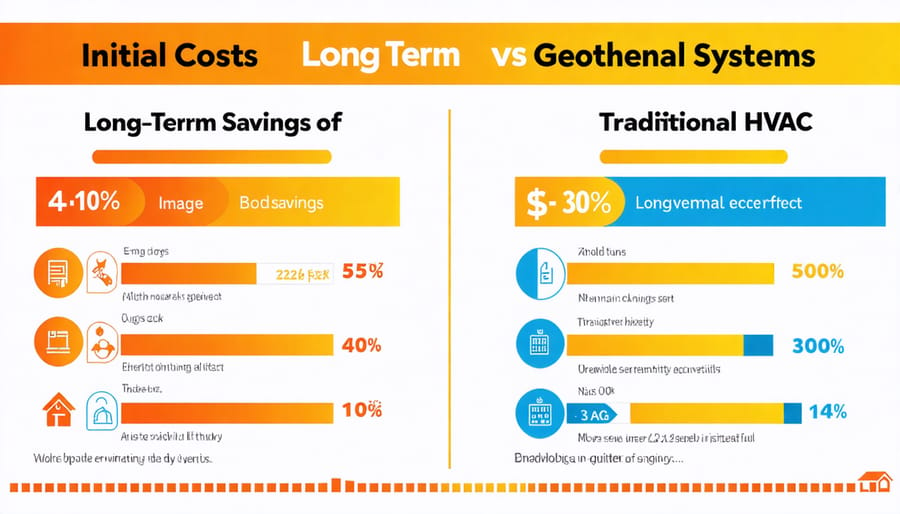
Available Tax Incentives and Rebates
The federal government offers significant incentives for homeowners investing in geothermal energy systems. Through the Inflation Reduction Act, you can claim a 30% tax credit on the total cost of installing a geothermal heat pump system through 2032. This credit covers both equipment and installation costs, with no upper limit on the amount you can claim.
Many states provide additional incentives that can be combined with federal benefits. For example, New York offers rebates up to $15,000 through their Clean Heat Program, while Maryland provides grants up to $3,000 for residential installations. Massachusetts residents can access interest-free loans through the Mass Save program specifically for geothermal installations.
Utility companies across the country also offer rebates and special rate programs. Some provide reduced electricity rates for homes with geothermal systems, while others offer one-time installation rebates ranging from $500 to $2,500. Several utilities also have financing programs with low-interest loans specifically for renewable energy improvements.
Property tax exemptions are available in several states, meaning the added value of your geothermal system won’t increase your property taxes. Some municipalities also offer expedited permitting and reduced fees for geothermal installations.
To maximize your savings, consider combining multiple incentives. A federal tax credit, state rebate, and utility company incentive could potentially cover 40-50% of your total installation costs. Contact your local energy office or utility provider to learn about specific programs in your area, as available incentives can vary significantly by location.
Combining Solar and Geothermal: The Perfect Partnership
The combination of geothermal and solar energy systems creates a powerful synergy that maximizes both technologies’ potential while addressing their individual limitations. When paired together, these renewable energy sources offer homeowners a robust path to energy self-sufficiency that works year-round, day and night.
Geothermal systems excel at providing consistent heating and cooling by tapping into the earth’s stable underground temperatures. However, they still require electricity to power their heat pumps. This is where solar energy integration creates the perfect partnership. Solar panels can generate the electricity needed to run the geothermal heat pumps, creating a self-sustaining system that dramatically reduces or eliminates dependence on grid power.
During summer months, when solar production is at its peak, excess solar energy can power the geothermal cooling system while storing additional electricity through net metering. In winter, when solar production decreases, the geothermal system continues to provide efficient heating by maintaining its consistent performance regardless of outside temperatures.
This combination offers several key advantages:
– Reduced energy costs through year-round efficiency
– Enhanced energy independence from the grid
– Improved home comfort in all seasons
– Greater environmental benefits through clean energy use
– Increased property value
– Protection against rising utility rates
The initial investment in both systems can be offset by federal tax credits, state incentives, and significant long-term energy savings. Many homeowners find that the combined systems pay for themselves faster than either technology alone, typically within 5-10 years. Additionally, the dual-system approach provides redundancy and reliability, ensuring your home always has access to renewable energy, regardless of weather conditions or time of day.
For those considering a renewable energy upgrade, this powerful combination offers a comprehensive solution that addresses both heating/cooling needs and electricity generation, making it an attractive option for homeowners committed to sustainable living.
Geothermal energy stands as a cornerstone in America’s path toward energy independence, offering a reliable, renewable power source that’s right beneath our feet. Unlike fossil fuels, which often require international trade and can be subject to global market fluctuations, geothermal resources are entirely domestic and inexhaustible. This homegrown energy solution not only reduces our dependence on foreign energy sources but also creates local jobs and strengthens our national energy security.
The United States already leads the world in geothermal power production, yet we’ve barely scratched the surface of our potential. With estimated reserves capable of providing up to 10% of our nation’s electricity needs, geothermal energy could significantly reduce our carbon footprint while boosting our energy independence. The technology’s reliability – operating 24/7 regardless of weather conditions – makes it an ideal complement to other renewable sources like wind and solar.
For homeowners, embracing geothermal heating and cooling systems represents a personal investment in America’s energy future. While the upfront costs may be higher than conventional systems, the long-term savings and energy independence these systems provide make them increasingly attractive. As more Americans adopt geothermal solutions, we move closer to a future where our energy needs are met sustainably and domestically, free from the uncertainties of international energy markets.




